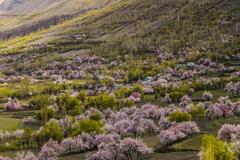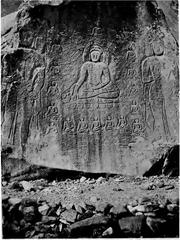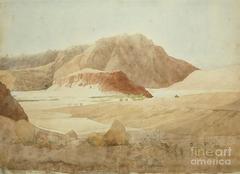
Comprehensive Guide to Visiting Gilgit-Baltistan, Pakistan
Date: 13/08/2024
Captivating Introduction
Welcome to Gilgit-Baltistan, a mystical land where history, culture, and nature converge in an awe-inspiring display. Imagine standing at the crossroads of civilizations, where the whispers of ancient merchants along the Silk Road still echo, and the majestic peaks of K2 and Rakaposhi pierce the sky. This enchanting region, nestled in the northernmost part of Pakistan, has been a cradle of human settlement and a hub of cultural exchanges for millennia. From the Buddhist monasteries of yore to the vibrant Islamic schools of the 8th century, Gilgit-Baltistan is a living testament to the rich tapestry of human history.
But it’s not just the past that captivates; the present is equally mesmerizing. Picture the diverse ethnic groups—the Balti, Shina, Burusho, and Wakhi—each celebrating their unique traditions through colorful festivals, music, and dance. Envision the breathtaking landscapes, from the lush valleys of the Karakoram and Himalayan ranges to the pristine lakes that mirror the sky. This is a place where nature’s grandeur meets cultural richness, offering an unparalleled experience for adventurers and culture enthusiasts alike.
Whether you’re exploring ancient forts like Baltit and Altit, marveling at the turquoise beauty of Attabad Lake, or trekking through the vast plains of Deosai National Park, Gilgit-Baltistan promises a journey that will leave you spellbound. Ready to unlock the secrets of this magical region? Let Audiala, your ultimate tour guide app, be your companion. With expertly crafted audio guides, Audiala will take you deeper into the stories, legends, and hidden gems of Gilgit-Baltistan, making your adventure truly unforgettable (Gilgit-Baltistan Discoveries, Adventures of Lil Nicki).
Table of Contents
- [Discover the Enchantment of Gilgit-Baltistan: A Journey Through Time and Culture](#discover-the-enchantment-of-gilgit-baltistan-a-journey-through-time-and-culturediscover-the-enchantment-of-gilgit-baltistan-a-journey-through-time-and-culture)
- [Ancient History](#ancient-historyancient-history)
- [Buddhist Influence](#buddhist-influencebuddhist-influence)
- [Islamic Conquests](#islamic-conquestsislamic-conquests)
- [Colonial Era](#colonial-eracolonial-era)
- [Post-Independence Era](#post-independence-erapost-independence-era)
- [Cultural Significance](#cultural-significancecultural-significance)
- [Natural Significance](#natural-significancenatural-significance)
- [Economic Significance](#economic-significanceeconomic-significance)
- [Strategic Significance](#strategic-significancestrategic-significance)
- [Preservation of Heritage](#preservation-of-heritagepreservation-of-heritage)
- [Visitor Tips](#visitor-tipsvisitor-tips)
- [Call to Action](#call-to-actioncall-to-action)
- [Top Attractions in Gilgit-Baltistan, Pakistan](#top-attractions-in-gilgit-baltistan-pakistantop-attractions-in-gilgit-baltistan-pakistan)
- [Introduction](#introductionintroduction)
- [Hunza Valley](#hunza-valleyhunza-valley)
- [Skardu](#skarduskardu)
- [Insider Tips and Hidden Gems](#insider-tips-and-hidden-gemsinsider-tips-and-hidden-gems)
- [Interactive Elements](#interactive-elementsinteractive-elements)
- [Practical Information with a Twist](#practical-information-with-a-twistpractical-information-with-a-twist)
- [Local Lingo Lessons](#local-lingo-lessonslocal-lingo-lessons)
- [Seasonal Highlights](#seasonal-highlightsseasonal-highlights)
- [Myth Busting and Surprises](#myth-busting-and-surprisesmyth-busting-and-surprises)
- [Storytelling Elements](#storytelling-elementsstorytelling-elements)
- [Frequently Asked Questions (FAQ)](#frequently-asked-questions-faqfrequently-asked-questions-faq)
- [Call to Action](#call-to-actioncall-to-action-1)
- [Getting There and Around](#getting-there-and-aroundgetting-there-and-around)
- [Traveling to Gilgit-Baltistan](#traveling-to-gilgit-baltistantraveling-to-gilgit-baltistan)
- [Getting Around Gilgit-Baltistan](#getting-around-gilgit-baltistangetting-around-gilgit-baltistan)
- [Local Transportation](#local-transportationlocal-transportation)
- [Taxis and Private Cars](#taxis-and-private-carstaxis-and-private-cars)
- [Public Buses and Vans](#public-buses-and-vanspublic-buses-and-vans)
- [Motorbikes and Bicycles](#motorbikes-and-bicyclesmotorbikes-and-bicycles)
- [Local Transportation](#local-transportationlocal-transportation)
- [Key Routes and Destinations](#key-routes-and-destinationskey-routes-and-destinations)
- [Gilgit to Hunza Valley](#gilgit-to-hunza-valleygilgit-to-hunza-valley)
- [Skardu to Deosai National Park](#skardu-to-deosai-national-parkskardu-to-deosai-national-park)
- [Essential Tips for Travelers](#essential-tips-for-travelersessential-tips-for-travelers)
- [Permits and Documentation](#permits-and-documentationpermits-and-documentation)
- [Health and Safety](#health-and-safetyhealth-and-safety)
- [Connectivity](#connectivityconnectivity)
- [Conclusion](#conclusionconclusion)
- [Call to Action](#call-to-actioncall-to-action-2)
- [References](#referencesreferences)
Discover the Enchantment of Gilgit-Baltistan: A Journey Through Time and Culture
Ancient History
Picture this: Gilgit-Baltistan, nestled in the northernmost part of Pakistan, has been the meeting point of civilizations for thousands of years. Imagine the rich aroma of spices traded along the Silk Road, mingling with the whispers of ancient merchants. Archaeological treasures from the Bronze Age reveal that this region has been a cradle of human settlement since time immemorial.
Buddhist Influence
Ever wondered what it would be like to stumble upon a hidden monastery? Between the 3rd and 7th centuries CE, Gilgit-Baltistan was a buzzing center of Buddhist learning. The Kargah Buddha, a majestic rock carving, stands as a silent guardian of this spiritual legacy. Picture monks in saffron robes, scholarly debates, and the tranquil hum of chants echoing through the valleys.
Islamic Conquests
Fast forward to the 8th century CE, when the region began to embrace the rich tapestry of Islam. Imagine traders and missionaries sharing stories and faith along the Silk Road, leading to the construction of beautiful mosques and vibrant Islamic schools. The architectural beauty and the cultural depth of this era still resonate in the region’s traditions.
Colonial Era
Jump to the 19th century, when the British Empire left its mark on Gilgit-Baltistan. The establishment of the Gilgit Agency in 1877 brought roads, telegraph lines, and a new administrative structure. Picture the hustle and bustle of a region in transformation, laying the groundwork for modern governance.
Post-Independence Era
In 1947, as British India was partitioned, Gilgit-Baltistan became part of Pakistan. Imagine the vibrant discussions and aspirations of its people as they navigated their unique path within the new nation. Today, there’s an ongoing conversation about granting the region provincial status, promising greater political representation and autonomy.
Cultural Significance
Gilgit-Baltistan is like a cultural mosaic, each piece a different ethnic group with its own colorful traditions. Envision the Balti, Shina, Burusho, and Wakhi people celebrating through diverse languages, music, and festivals. The annual Shandur Polo Festival is a must-see spectacle that draws visitors worldwide, blending cultural pride with thrilling sports.
Natural Significance
Imagine standing before the towering peaks of K2 or trekking through the lush valleys of the Karakoram and Himalayan ranges. Gilgit-Baltistan is a paradise for nature lovers, with its pristine lakes and diverse flora and fauna. The raw, untouched beauty of the region is nothing short of breathtaking.
Economic Significance
Gilgit-Baltistan thrives on agriculture, tourism, and trade. Picture the fertile valleys bursting with apricots, apples, and cherries, destined for markets far and wide. Tourism flourishes as adventurers and culture enthusiasts flock to experience its wonders. The Karakoram Highway, a marvel of engineering, boosts connectivity and economic vitality.
Strategic Significance
The region’s strategic importance is undeniable, sitting at the crossroads of Pakistan, China, and India. Imagine the bustling activity along the China-Pakistan Economic Corridor (CPEC), enhancing connectivity and trade under China’s Belt and Road Initiative. Gilgit-Baltistan’s proximity to Kashmir adds another layer of geopolitical intrigue.
Preservation of Heritage
Efforts to preserve the rich heritage of Gilgit-Baltistan are in full swing. Organizations like the Aga Khan Cultural Service Pakistan are restoring historical sites and promoting traditional crafts. These initiatives aim to protect the region’s legacy while fostering sustainable tourism.
Visitor Tips
Planning a trip to Gilgit-Baltistan? Here are some insider tips to make your adventure unforgettable:
- Travel Permits: Foreign tourists might need special permits for certain areas. Check the latest requirements and get your permits in advance.
- Weather Conditions: The weather can be unpredictable, so pack for all seasons. Be prepared for extreme temperatures in summer and winter.
- Health Precautions: High altitudes can cause altitude sickness. Acclimatize gradually, stay hydrated, and consult a healthcare professional before your trip.
- Local Customs: Respect local traditions and dress modestly, especially at religious sites. Always ask permission before taking photos of people or private property.
- Sustainable Tourism: Help preserve the natural beauty and cultural heritage by minimizing waste, respecting wildlife, and supporting local businesses.
Call to Action
Ready to unlock the secrets of Gilgit-Baltistan? Download Audiala, our tour guide app, for expertly crafted audio guides that reveal hidden gems and fascinating stories. Audiala is the perfect companion for curious travelers, making your exploration deeper and more enriching. Don’t miss out—download Audiala before your visit and let the adventure begin!
Top Attractions in Gilgit-Baltistan, Pakistan
Introduction
Did you know Gilgit-Baltistan is home to five of the world’s fourteen highest peaks? Welcome to the ‘Roof of the World,’ where adventure awaits at every turn. Imagine a land where ancient forts whisper tales of yore and valleys echo with the melodies of nature. Whether you’re chasing adrenaline, culture, or sheer wanderlust, Gilgit-Baltistan is your ultimate playground. Ready to embark on this epic journey? Let’s dive in!
Hunza Valley
Hunza Valley is like stepping into a painting where mountains touch the heavens. Nestled in the mighty Karakoram range, this valley offers more than just breathtaking views—it’s a tapestry of history and culture.
- Baltit Fort: Over 700 years old, this fort is the wise grandparent of Hunza, brimming with stories. Now a museum, it offers jaw-dropping views that are totally Instagram-worthy!
- Altit Fort: Standing tall for 900 years, this fort showcases the architectural brilliance of the past. Roam through its ancient halls and let history come alive.
- Rakaposhi View Point: At 7,788 meters, Rakaposhi is a majestic sight. Perfect for those panoramic shots that make your friends go ‘wow!’
- Attabad Lake: Created by a landslide in 2010, this turquoise beauty offers boating, fishing, and endless photo ops.
Skardu
Skardu is your gateway to some of the world’s highest peaks, including the legendary K2. But it’s not just about the mountains; it’s a haven of serene lakes, rich culture, and landscapes that make your heart sing.
- Shangrila Resort (Lower Kachura Lake): Often called ‘Heaven on Earth,’ this resort offers stunning views, luxury accommodations, and delicious local cuisine. Perfect for a serene retreat.
- Sheosar Lake: Tucked away in the Deosai National Park, this lake is one of the highest in the world. The serene surroundings and crystal-clear waters make it a must-visit.
- Deosai National Park: Known as the ‘Land of Giants,’ this park offers a unique blend of lush plains, rolling hills, and diverse wildlife. Perfect for trekking and wildlife spotting.
Insider Tips and Hidden Gems
- Local Festivals: Don’t miss the traditional festivals like the Shandur Polo Festival and the Harvest Festival in Hunza. These events offer a deep dive into local culture and traditions.
- Hidden Waterfalls: Explore the lesser-known waterfalls in the region, like the stunning Manthokha Waterfall in Kharmang.
- Cultural Etiquette: When visiting local homes, it’s customary to bring a small gift and always accept tea when offered. It’s a sign of respect and hospitality.
Interactive Elements
- Challenge: Can you spot the rare Markhor in the Khunjerab National Park? Share your photos with the hashtag #MarkhorChallenge.
- Mini-Quest: Try to learn five phrases in the local Burushaski language and use them during your trip. It’s a great way to connect with locals!
Practical Information with a Twist
- Best Time to Visit: Spring and Autumn are the best times to explore Gilgit-Baltistan. Imagine walking through valleys carpeted with flowers or witnessing the golden hues of autumn.
- Cultural Etiquette: Always greet the locals with a smile and a ‘Salaam Alaikum.’ It’s a simple gesture that goes a long way in building connections.
Local Lingo Lessons
- ‘Shukria’: Thank you. Pronounced ‘shoo-kree-ah.’ Use it often!
- ‘As-Salaam-Alaikum’: Peace be upon you. A common greeting. Pronounced ‘ah-sah-lahm ah-lay-koom.’
- ‘Chai’: Tea. A staple in every household. Pronounced ‘chai.‘
Seasonal Highlights
- Spring: Blooming flowers and mild weather make it perfect for trekking and outdoor activities.
- Summer: Ideal for exploring lakes and high-altitude regions.
- Autumn: Witness the stunning fall foliage that transforms the valleys into a golden paradise.
- Winter: A snowy wonderland perfect for winter sports and cozy fireside evenings.
Myth Busting and Surprises
- Myth: Gilgit-Baltistan is inaccessible. Reality: With well-maintained roads and daily flights, it’s easier to reach than you think!
- Surprise: Did you know the locals have one of the highest life expectancies in the world? Their secret: a diet rich in apricots and a stress-free lifestyle.
Storytelling Elements
Picture this: It’s a crisp autumn morning, and you’re standing at the Rakaposhi View Point. The sun is just rising, casting a golden glow over the snow-capped peaks. You take a deep breath, filling your lungs with the pure mountain air, and feel an overwhelming sense of peace. This is just one of the countless magical moments waiting for you in Gilgit-Baltistan.
Frequently Asked Questions (FAQ)
- Q: What is the best way to get to Gilgit-Baltistan?
- A: The quickest way is by flight from Islamabad to Gilgit or Skardu. Alternatively, you can take a scenic road trip along the Karakoram Highway.
- Q: Is it safe for solo travelers?
- A: Absolutely! Gilgit-Baltistan is known for its hospitality and is generally very safe for solo travelers.
- Q: What should I pack?
- A: Layers of clothing, sturdy hiking boots, and a good camera are must-haves. Don’t forget sunscreen and a hat for sun protection.
Call to Action
Ready to uncover the secrets of Gilgit-Baltistan? Download Audiala, your ultimate tour guide app, for expertly crafted audio guides that bring the region to life. With Audiala, you’ll discover hidden gems and fascinating stories that you won’t find anywhere else. Don’t miss out—download Audiala now and start your adventure!
Getting There and Around
Traveling to Gilgit-Baltistan
By Air
Imagine soaring through the clouds and catching your first glimpse of the towering peaks of Gilgit-Baltistan. Flying from Islamabad to this mountainous paradise is the quickest and most convenient option. Pakistan International Airlines (PIA) offers several daily flights, whisking you away in just 1.5 hours. Depending on when you book, prices range from PKR 10,000 to PKR 20,000. Pro tip: Book early, especially during the colorful blooms of spring and the golden hues of autumn (Gilgit-Baltistan Discoveries).
By Road
For the true adventure seeker, nothing beats the thrill of traveling the Karakoram Highway (KKH). Known as the China-Pakistan Friendship Highway, this route takes you through breathtaking landscapes of rugged mountains, shimmering glaciers, and lush valleys. The journey from Islamabad to Gilgit-Baltistan by road is an epic 18 to 24-hour odyssey, depending on road conditions and how often you stop to snap photos (Gilgit-Baltistand Discoveries).
By Bus
Hop on a NATCO bus, the budget-friendly way to travel the KKH. With tickets priced between PKR 3,000 and PKR 5,000, this option is both economical and comfortable. While the ride might be long, it’s a safe and reliable choice for those who don’t mind a bit of a journey (Gilgit-Baltistan Discoveries).
By Car
For those who crave freedom, driving from Islamabad to Gilgit-Baltistan offers unmatched flexibility. Picture yourself stopping at hidden waterfalls or quaint mountain villages along the way. Just ensure your vehicle is in prime condition, check the weather, and prepare for potentially challenging roads. The KKH isn’t for the faint-hearted, but the rewards are spectacular (Gilgit-Baltistan Discoveries).
Getting Around Gilgit-Baltistan
Local Transportation
Navigating Gilgit-Baltistan is part of the adventure. The rugged terrain means transportation can be as thrilling as the destination itself.
Taxis and Private Cars
In towns like Gilgit and Skardu, taxis and private cars are readily available. Hiring a car with a driver offers flexibility and comfort but remember to negotiate the fare before you hit the road.
Public Buses and Vans
For a more local experience, hop on a public bus or van. These are the lifelines connecting towns and villages, offering a budget-friendly but sometimes bumpy ride.
Motorbikes and Bicycles
For the daring, renta motorbike or bicycle and feel the wind as you explore remote areas. Be prepared for tough road conditions and unpredictable weather.
Key Routes and Destinations
Gilgit to Hunza Valley
The drive from Gilgit to Hunza Valley is a must. Covering about 100 kilometers in 2 to 3 hours, the well-maintained road offers stunning views of Rakaposhi and other majestic peaks (Travopo).
Skardu to Deosai National Park
Skardu to Deosai National Park is a journey through nature’s marvels. This 30-kilometer drive, taking 1 to 2 hours, can be challenging, but the vast Deosai Plateau is a sight to behold (Apricot Tours).
Essential Tips for Travelers
Permits and Documentation
Some areas in Gilgit-Baltistan require travel permits, especially for foreign tourists near the borders with China and India. Do your homework and get the necessary permits (Gilgit-Baltistan Discoveries).
Health and Safety
Altitude sickness is a real concern, so acclimatize gradually and stay hydrated. Medical facilities are limited, so carry a first-aid kit and essential medications. Travel insurance covering medical evacuation is highly recommended (Adventures of Lil Nicki).
Connectivity
Internet and mobile coverage can be sparse. Guesthouses and hotels might offer Wi-Fi, but speeds are often slow. For the best mobile coverage, get a Zong SIM card (Adventures of Lil Nicki).
Conclusion
Exploring the stunning landscapes of Gilgit-Baltistan is a journey of a lifetime. Whether you fly, drive, or take a bus, each mode of transport has its unique charm. Once there, the region’s beauty and rich culture promise unforgettable memories. Ready for an adventure? Download Audiala, your ultimate travel companion, for expert insights and hidden gems. Unlock the secrets of Gilgit-Baltistan with Audiala and make your journey truly special.
Call to Action
As we conclude this comprehensive guide to Gilgit-Baltistan, it’s clear that this region is a treasure trove of historical, cultural, and natural wonders. From the ancient Silk Road to the breathtaking peaks of the Karakoram and Himalayan ranges, Gilgit-Baltistan offers an unparalleled journey through time and nature. The region’s rich history, from Buddhist monasteries to Islamic schools, and its vibrant cultural mosaic, featuring diverse ethnic groups and colorful festivals, make it a must-visit destination.
Traveling to Gilgit-Baltistan is an adventure in itself, whether you choose the convenience of flying or the thrill of navigating the Karakoram Highway. Once there, the local transportation options, from taxis to motorbikes, ensure that every corner of this magical land is within reach. Key routes like the drive from Gilgit to Hunza Valley or the journey from Skardu to Deosai National Park promise unforgettable experiences and stunning vistas.
Whether you’re an adventurer, a history buff, or a culture enthusiast, Gilgit-Baltistan has something to offer. And to make your journey even more enriching, download Audiala, your ultimate travel companion. With expertly crafted audio guides, Audiala will help you uncover the hidden gems and fascinating stories that make Gilgit-Baltistan so unique. So, pack your bags, embrace the adventure, and let Audiala guide you through the enchanting landscapes and rich heritage of Gilgit-Baltistan (Gilgit-Baltistan Discoveries, Adventures of Lil Nicki).
References
- Gilgit-Baltistan Discoveries, 2024 source
- Adventures of Lil Nicki, 2024 source
- Travopo, 2024 source
- Apricot Tours, 2024 source


